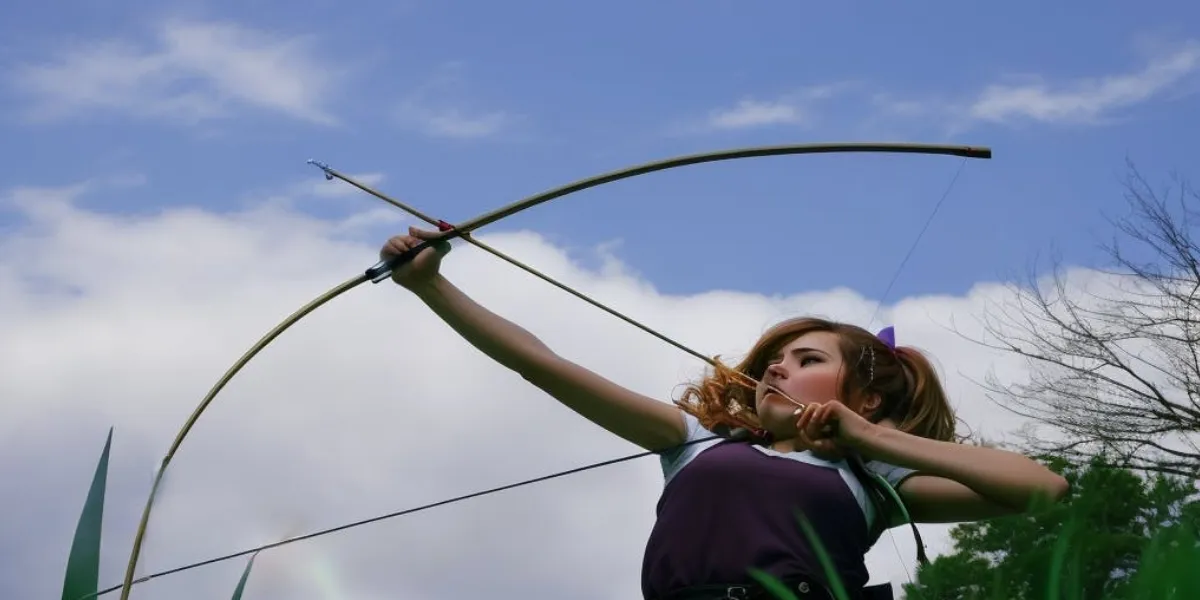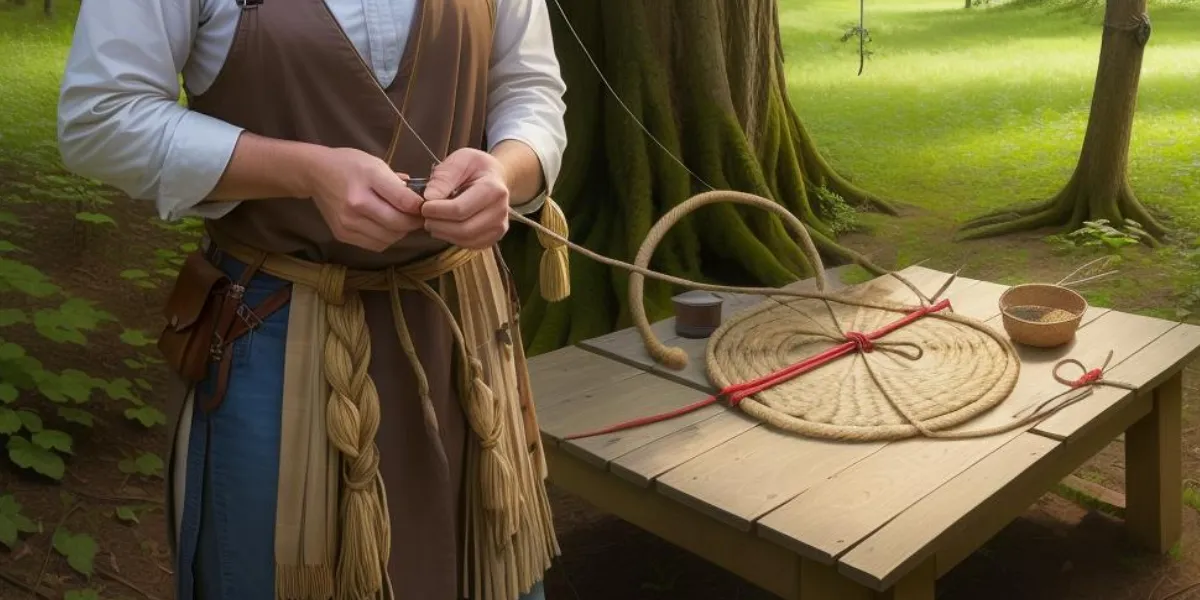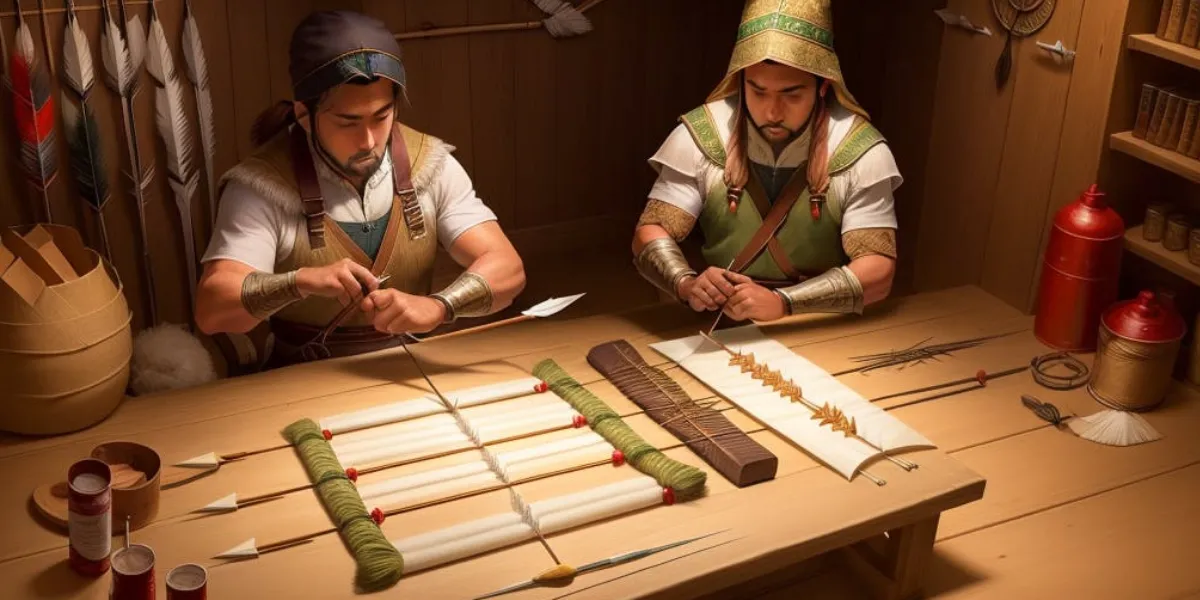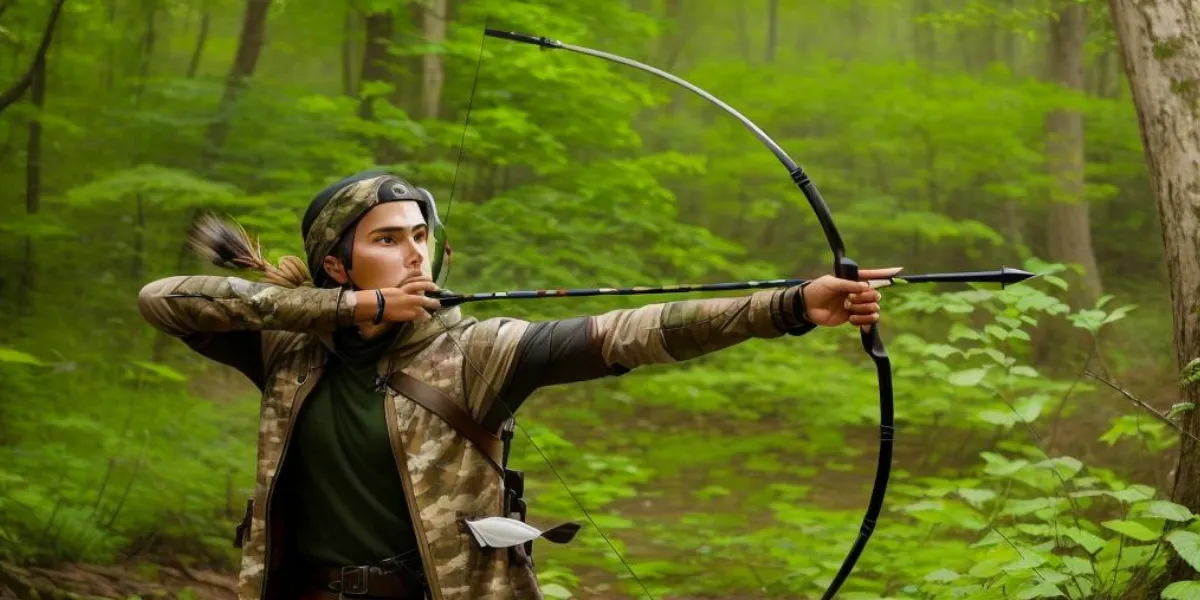
Crafting An Emergency Homemade Bow In The Wild
Crafting a survival bow is an essential skill, offering liberation and empowerment in challenging environments. This art of creating a reliable and effective bow and arrow goes beyond mere subsistence, increasing the distance between hunter and prey and greatly improving the chances of successful capture. From selecting the right wood to constructing arrows and skillfully using the bow, each step plays a crucial role. In this article, I will explore survival bow crafting, sharing valuable insights and providing step-by-step instructions to help you master this art.
Key Summaries
Survival bow is essential for increasing distance between you and prey, improving chances of catching an animal, and is a crucial skill in survival situations.
Exceptional wood for a survival bow should be flexible, have a good snap-back response, and be free of knots and with a gradual taper.
Creating a strong bow cord is important for transferring the bow’s snap to the arrow effectively, and it should stand off the bow by about 5 inches.
Making arrows involves choosing straight shoots, clearing them of branches and knots, tapering the shaft, straightening it, and notching the small end for the string and fletching for stability.
Importance Of Survival Bow
The survival bow is an indispensable tool in any survivalist’s arsenal, significantly increasing the distance between the hunter and their prey while improving the chances of successfully catching an animal.
To improve accuracy with a survival bow, there are a few tips to keep in mind. First, practice regularly to develop muscle memory and proper form. Second, adjust your stance and grip to find what feels most comfortable and stable for you.
Finally, consider using different types of arrowheads for hunting. Broadheads are ideal for big game, while small game points are better suited for smaller animals. Experiment with different arrowheads to find what works best for your specific hunting needs.

Finding Exceptional Wood
The first crucial step is to identify and acquire exceptional wood for the construction process. Choosing the right wood is essential for a successful bow.
Start by testing the wood’s flexibility and snap-back response. Break the wood to determine if it is suitable for a bow. Look for a sapling with a gradual taper and absence of knots. Modify the stave to ensure both limbs bend equally. Cut notches on each limb to accept the bow string.
Finding exceptional wood is the foundation of a well-crafted survival bow. Taking the time to select the right wood will greatly impact the performance and durability of your bow, increasing your chances of success in a survival situation.
Creating The Bow Cord
Choosing the right cordage is crucial for the bow’s efficiency and durability. There are different types of bow strings available, including synthetic cordage and natural materials. Synthetic cordage is preferred due to its strength and minimal stretch, which allows for effective transfer of the bow’s snap to the arrow.
The cord should stand off the bow by about 5 inches, known as brace height, to optimize the bow’s snap and performance. However, if synthetic cordage is not available, natural materials can be used as a substitute.
It is important to select a cordage that provides the necessary strength and reliability for a successful survival bow.

Making Your Arrows
Crafting arrows is an essential step in the process of mastering the art of survival bow crafting. When making your arrows, it is important to choose straight shoots from trees such as maple, willow, or dogwood.
Clear the shoots of branches and knots to ensure a smooth and even shaft.
Tapering the shaft gradually from end to end is crucial for optimal arrow performance.
To straighten the shaft, heat it and carefully bend it into shape.
Notch the small end of the shaft for the string and use fletching techniques to add stability to the arrow.

Making A Bow In The Wild
Begin by locating and cutting your bow stick.
When in a wooded area, look for a live sapling or tree limb that is approximately ½ inch in diameter. Use your hand saw to cut down the sapling or limb. Afterward, use your pruning scissors to remove any branches or small limbs. Make sure that the limb or stick is just below your belly button when one end is placed on the ground.
Now, let's wrap the string around the top of the bow. Place your bow on the ground and tightly wrap a thin, strong string around the top end of your bow. Ensure to tie a secure knot in the string. If possible, consider using a braided nylon string for added strength and durability.
After wrapping the string, it's time to cut and bend the bow. Flip the bow over, placing the top part on the ground. Use a knife to create a notch across the bottom end of the bow. Apply pressure to the end of the bow to bend it. Make sure that the notch is thick enough for your string to sit in securely.
Now, let's string the bow. Pull the string tightly up the length of the bow and over the end, allowing the string to sit in the notch you created. Wrap the string around the bow 6 to 8 times and then tie a knot in the string to keep it in place.
To secure the ends of the bow and string, you can use electrical tape. Wrap the string with electrical tape to ensure it remains secure. Additionally, wrap the center of the bow with electrical tape to create a comfortable hand grip. Finally, place a small piece of electrical tape around the center of the string to mark where the arrow will rest.
Lastly, let's create the arrows. For this, you will need wooden dowels, electrical tape, and feathers. Cut the ¼ inch or 5/16 inch wooden dowels to a length of 18 to 24 inches. Place a piece of electrical tape around the top and bottom of the dowel for added strength. Then, use an exact-o knife to slit the end of the arrow. Cut a feather in half with a knife, and attach one half of the feather to each side of the arrow near the end using glue.
Now, you are all set to embark on your archery adventure in the wild!
Using The Survival Bow And Arrow
When employing the survival bow and arrow, it is crucial to hold the bow at a 45-degree angle to keep the arrow securely in place. This technique ensures that the arrow is properly aligned with the target and reduces the risk of it falling off or becoming loose during the shot.
Remember to use your pointer finger as an arrow rest, which provides stability and control.
It is important to note that a green wood bow may require closer proximity to the prey, while a drying bow increases snap but remains slower than seasoned wood bows.
Mastering the art of using the survival bow and arrow is an essential skill for hunting and increasing your chances of survival in the wild.

Essential Survival Bow Crafting Tips
To craft an effective survival bow, proper selection of wood is essential. Look for a sapling with a gradual taper and no knots. Test the wood’s flexibility and snap-back response by breaking it. Modify the stave to ensure both limbs bend equally and cut notches on each limb to accept the bowstring.
For the bowstring, use synthetic cordage or natural materials to make a strong cord that stands off the bow by about 5 inches (brace height). This will transfer the bow’s snap to the arrow effectively.
Avoid common mistakes such as using unsuitable wood or not properly aligning the limbs. By following these tips for effective bowstring construction and avoiding common mistakes, you can craft a reliable survival bow.
Frequently Asked Questions
What is the best wood for a survival bow?
The best wood for a survival bow is typically yew or hickory due to their flexibility, strength,
What is the best material for homemade bows?
The best material for homemade bows is typically hardwood, such as yew or hickory, which provide strength and flexibility for an effective bow.
How long should a survival bow be?
The length of a survival bow varies depending on personal preference and the purpose of use. However, a typical range is between 48 to 72 inches.
What is the lethal range of a long bow?
The lethal range of a long bow depends on various factors such as the skill of the archer and the type of arrow used, but it generally ranges between 200 to 300 yards.
How long is too long to leave a bow strung?
It is generally recommended not to leave a bow strung for an extended period, as prolonged tension can cause the bow to lose its shape or weaken over time.
Should I loosen my bow after use?
Yes, it is recommended to loosen your bow after use to relieve tension and prevent damage to the bow. It is not important to do this if your bow is temporary and needed for emergency hunting to survive.
How many times do you twist a bow string?
The number of times you twist a bow string depends on the desired tension and the type of bow you are using.
Can you over twist a bow string?
Yes, over twisting a bow string can weaken it and potentially lead to breakage or decreased performance.
Should the bow string touch the string stop?
No, the bow string should not touch the string stop in order to maintain proper tension and prevent damage to the bow.
Is it bad to get your bow string wet?
Yes, it is generally not recommended to get your bow string wet as it can weaken the fibers and affect its performance.
Why shouldn't you release a bow string without an arrow?
Releasing a bow string without an arrow can cause damage to the bow and potentially injure yourself or others due to the sudden release of tension.
Conclusion
Mastering the art of survival bow crafting is a crucial skill for thriving in challenging environments. By understanding the process and materials involved, such as selecting the right wood and creating a strong bow cord, one can greatly increase the chances of successfully capturing prey. Additionally, the construction of arrows and skillful use of the bow are equally important factors to consider. With these insights and step-by-step instructions, you can confidently master the craft of survival bow crafting. So, grab your bow and arrow and embark on your survival journey with confidence and skill.

